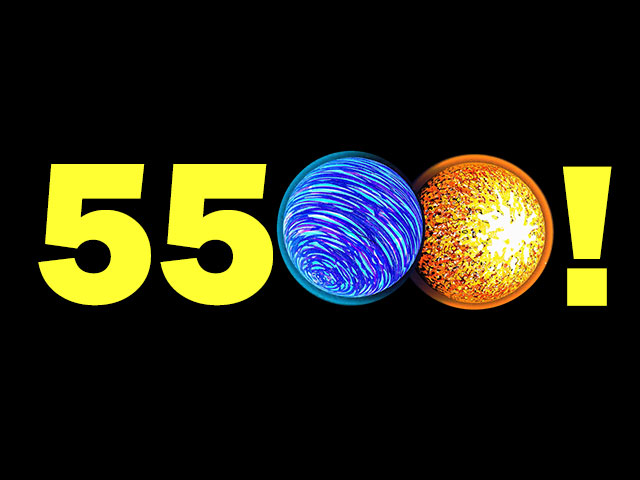News | August 24, 2022
Discovery Alert: Intriguing New ‘Super-Earth' Could Get a Closer Look

Artist's rendering of a super-Earth-type exoplanet, TOI 1452 b, as it might look if the planet were an "ocean world" – one of the possibilities suggested in a new study. Credit: Benoit Gougeon, Université de Montréal.
The discovery: Planet TOI-1452 b.
Key facts: Using observations from NASA’s Transiting Exoplanet Survey Satellite (TESS), backed up by ground-based telescopes, an international team led by the University of Montreal announced the discovery of a “super-Earth” – a planet that is potentially rocky like ours, but larger – orbiting a red-dwarf star about 100 light-years away. Further investigation could shed light on an intriguing possibility: that the planet might be a “water world.”
Details: Ocean planets are long imagined but difficult to confirm, and TOI-1452 b is no different. About 70% larger than Earth, and roughly five times as massive, its density could be consistent with having a very deep ocean. But more follow-up will be needed. The planet also might be a huge rock, with little or no atmosphere. It could even be a rocky planet with an atmosphere of hydrogen and helium.
If TOI-1452 b were shown to be an ocean world, that ocean could be quite deep indeed. While Earth’s surface is 70% water, our sea of blue makes up less than 1% of Earth’s mass. One simulation of TOI-1452 b, created by computer modeling specialists on the discovery team, showed that water could make up as much as 30% of its mass. That proportion is comparable to watery moons in our solar system – Jupiter’s Ganymede and Callisto, or Saturn’s Titan and Enceladus – believed to hide deep oceans under shells of ice.
TOI-1452 b makes a complete orbit of its star every 11 days – a “year” on TOI-1452 b. But because the red-dwarf star is smaller and cooler than our Sun, the planet receives a similar amount of light from its star as Venus does from our Sun. Liquid water might exist on the planet’s surface, despite its close orbit. The star, by the way, is one of a pair; its gravitational partner also is a red dwarf, estimated to be in a 1,400-year orbit.
Fun facts: Planet TOI-1452 b seems perfectly positioned for further investigation by the James Webb Space Telescope, now delivering science observations from its perch about a million miles (1.6 million kilometers) from Earth. The planet’s distance of 100 light-years is, in astronomical terms, fairly close. Its relatively bright star should allow Webb to capture a spectrum of starlight shining through its atmosphere, a kind of fingerprint of atmospheric components. It also appears in a part of the sky, in the constellation Draco, that Webb can observe almost any time of year. Researchers on the discovery team say they will seek to schedule time on Webb to take a closer look.
The discoverers: The international team that found the planet was led by Charles Cadieux, a Ph.D. student at the University of Montreal. Read the University’s press release.










